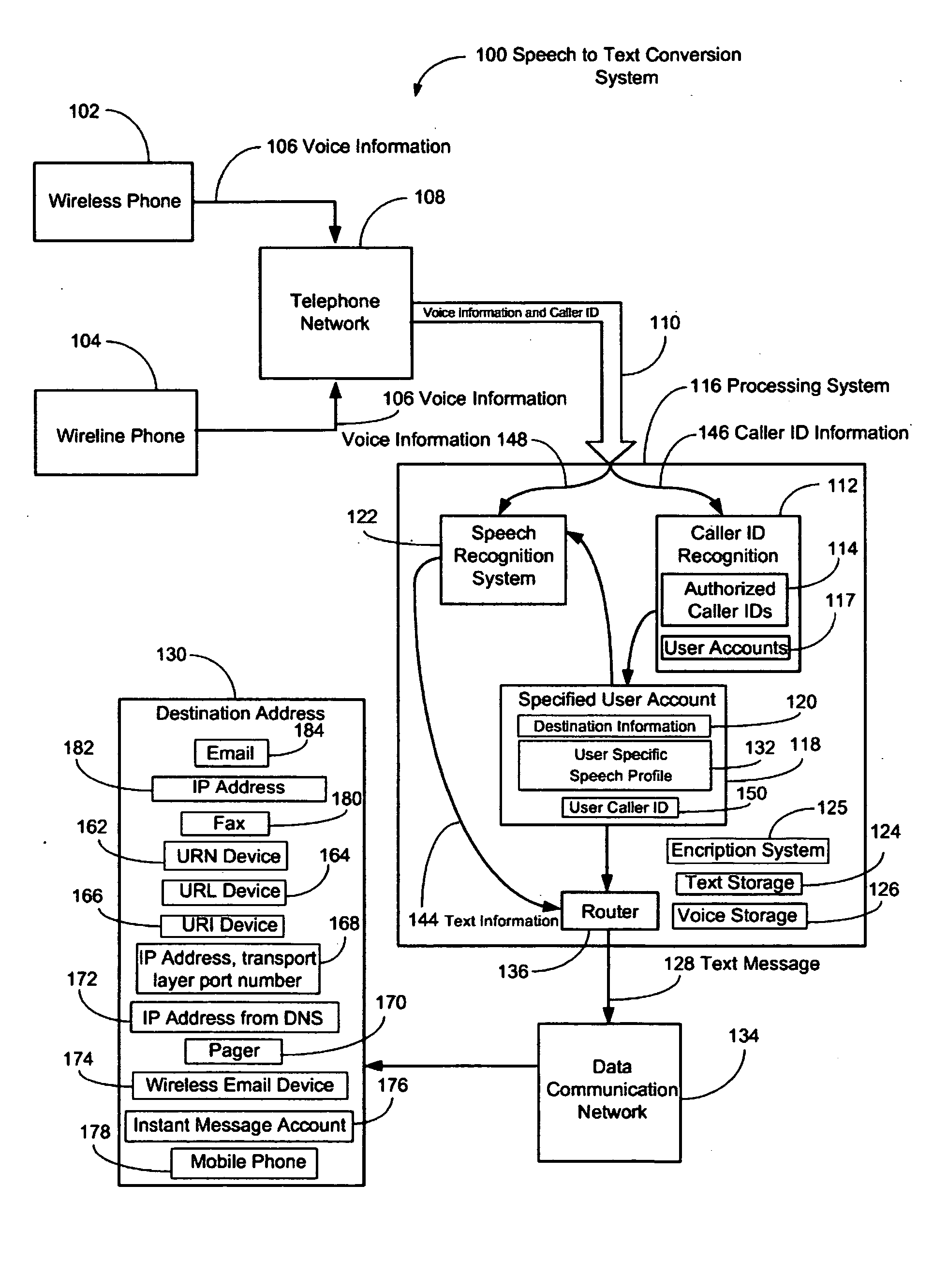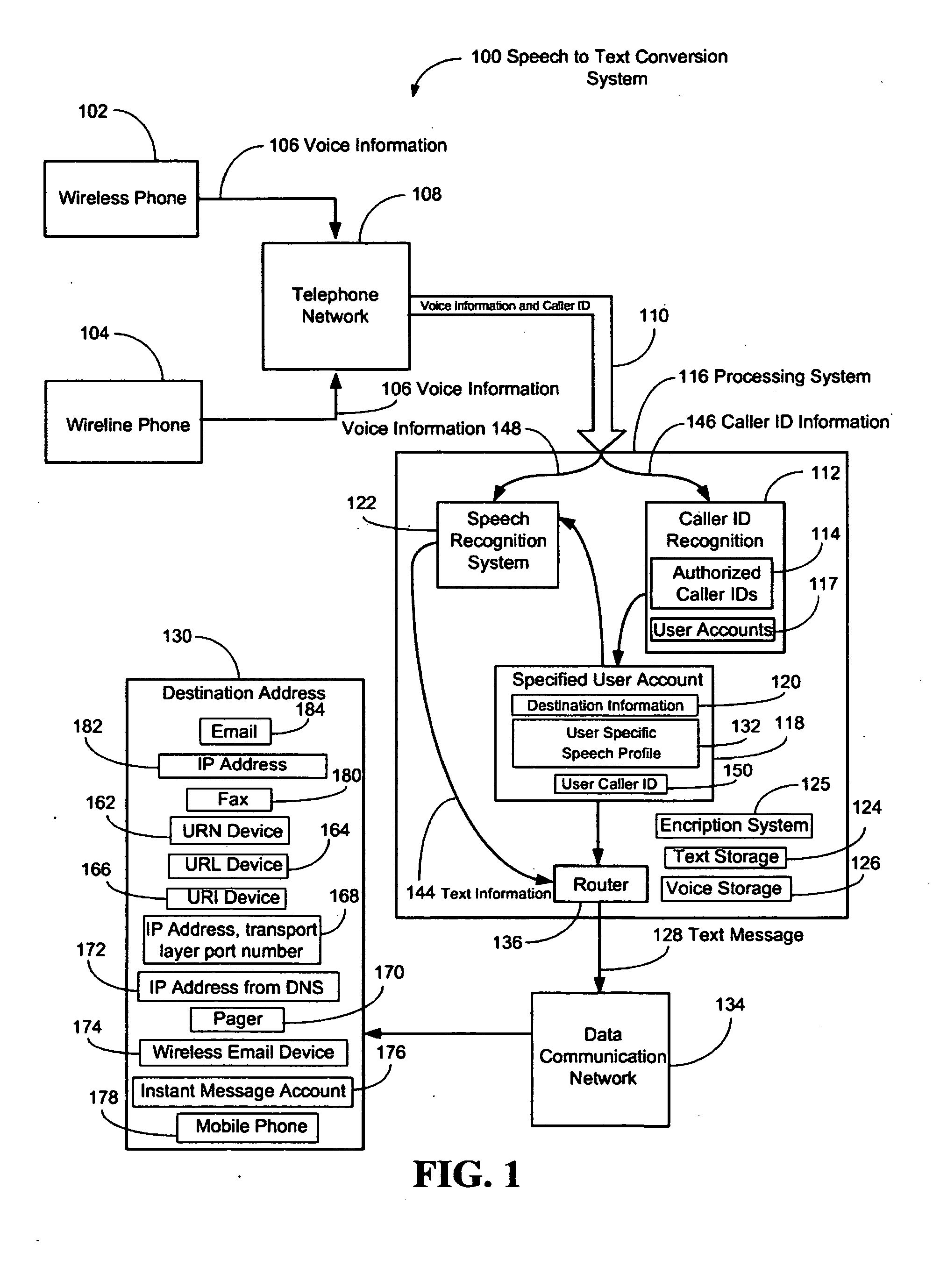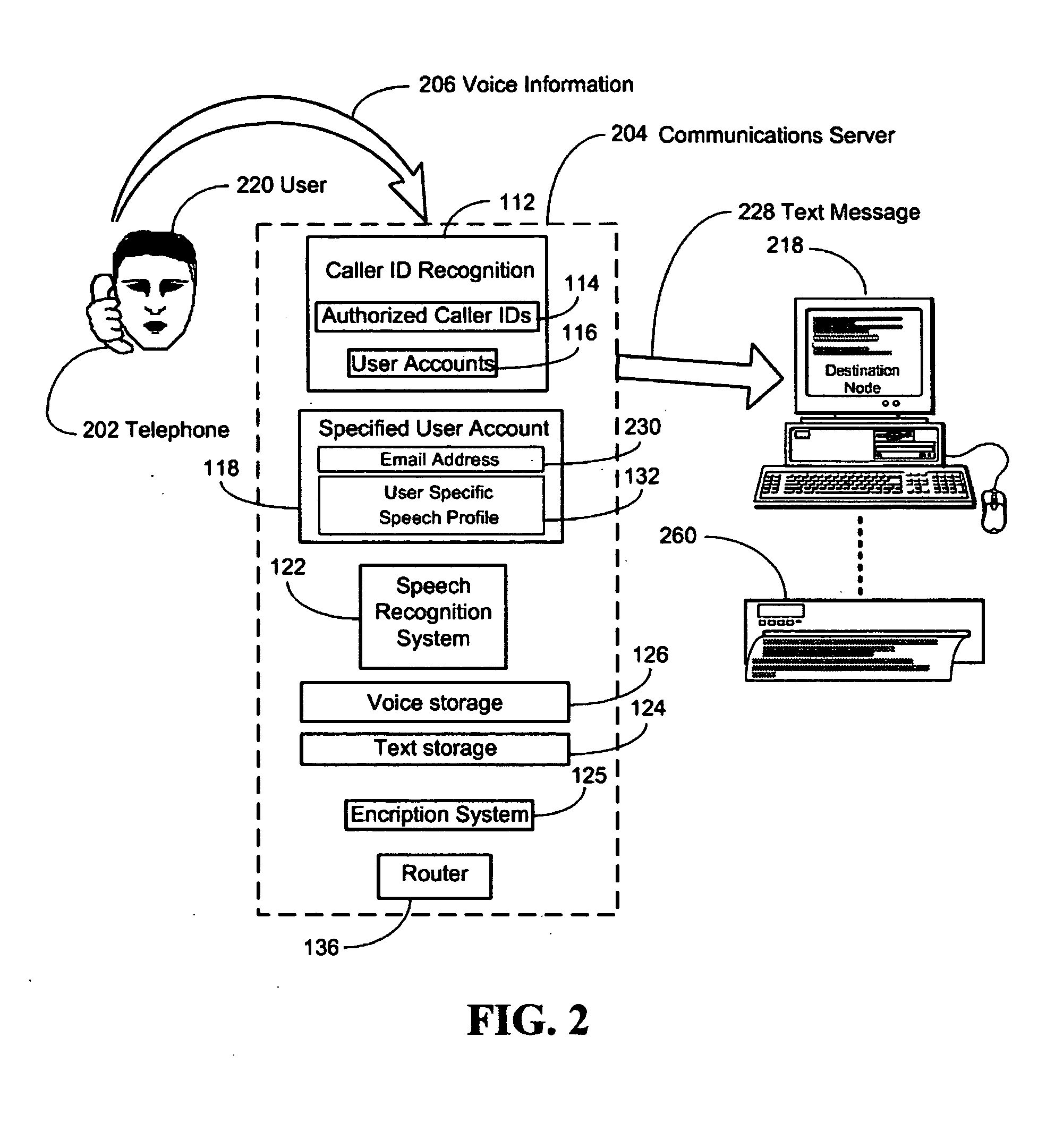Speech to text conversion system
a technology of speech recognition and conversion system, applied in the field of speech to text communication conversion device, can solve the problems of increasing the cost of speech recognition in realizable system with desired performance, further errors introduced by equipment and processes used to capture,
- Summary
- Abstract
- Description
- Claims
- Application Information
AI Technical Summary
Benefits of technology
Problems solved by technology
Method used
Image
Examples
Embodiment Construction
[0020] Referring to the drawings in general, and more particularly to FIG. 1, shown therein is a block diagram of an embodiment of a speech to text conversion system 100. In what follows, similar or identical structure is identified using identical callouts. The speech to text conversion system 100 includes at least one telephony device that transmits voice information and caller identification information referred to herein as “Caller ID.” The telephony device may comprise a wireless phone 102 or a wireline phone 104, which transmits 106 a call, for example, by voice, or voice information, to a telephone network 108 from a user. The telephone network 108 generates a Caller ID and transmits the voice information and Caller ID 110 to a processing system 116. The processing system 116 routes the Caller ID information 146 to a Caller ID recognition system 112 containing a plurality of Caller IDs 114 authorized to use the processing system 116. Each authorized caller ID 114 has an assoc...
PUM
 Login to View More
Login to View More Abstract
Description
Claims
Application Information
 Login to View More
Login to View More - R&D
- Intellectual Property
- Life Sciences
- Materials
- Tech Scout
- Unparalleled Data Quality
- Higher Quality Content
- 60% Fewer Hallucinations
Browse by: Latest US Patents, China's latest patents, Technical Efficacy Thesaurus, Application Domain, Technology Topic, Popular Technical Reports.
© 2025 PatSnap. All rights reserved.Legal|Privacy policy|Modern Slavery Act Transparency Statement|Sitemap|About US| Contact US: help@patsnap.com



